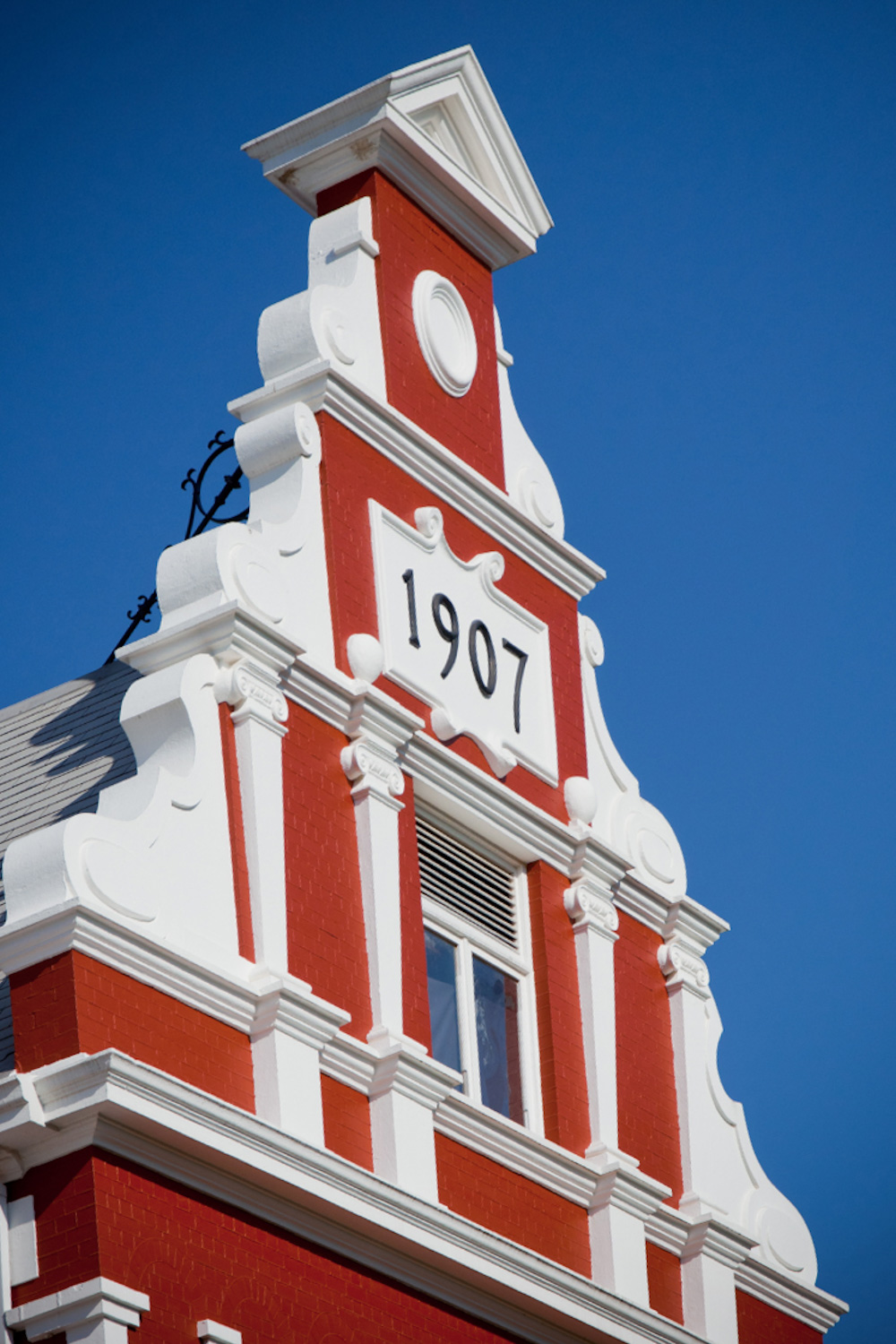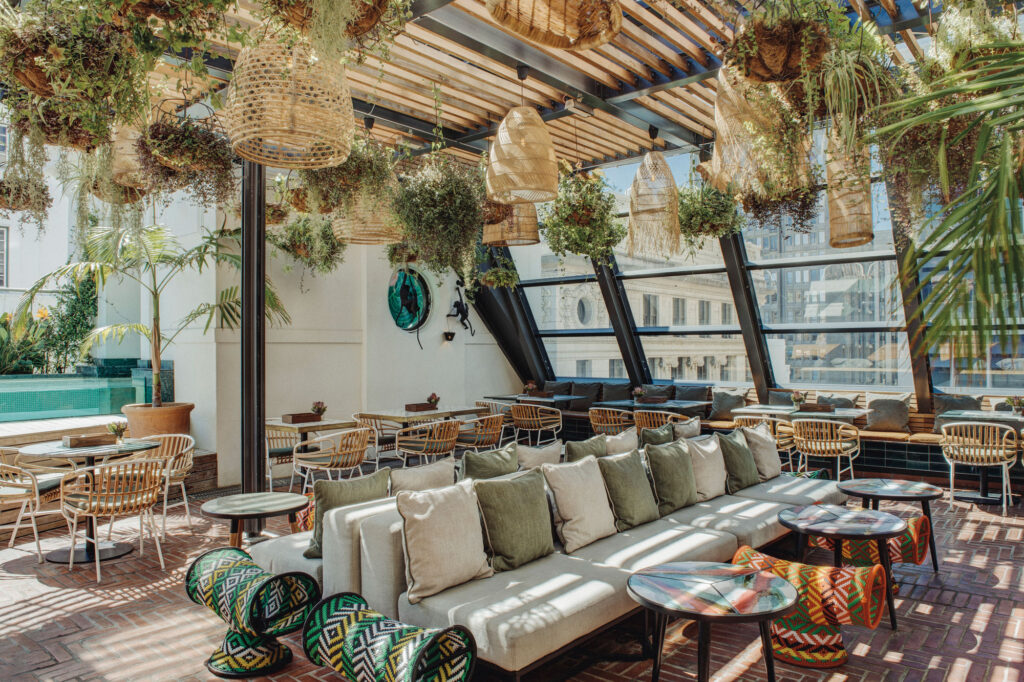
South Africa
The heritage and beauty of Cape Dutch architecture
Southern Africa • Insider guides • The heritage and beauty of Cape Dutch architecture
Guide on Cape Dutch architecture design and history
Cape Dutch architecture stands as one of South Africa’s most distinctive and iconic styles, rooted in the 17th and 18th centuries. Originating from the Dutch settlers who arrived with the Dutch East India Company (VOC), Cape Dutch architecture is characterised by its elegant gables, thatched roofs and symmetrical design. It stands out as a key part of South Africa’s architectural identity, offering a glimpse into the country’s colonial past and its adaptation to local conditions. This article explores the origins, key features and enduring legacy of Cape Dutch architecture while highlighting some of the most beautiful examples you can experience today.
Photography courtesy of Unsplash
Table of Contents

Where did Cape Dutch architecture come from?
Cape Dutch architecture developed during the 17th and 18th centuries, heavily influenced by the Dutch settlers and the VOC. When the Dutch East India Company established a refreshment station at the Cape of Good Hope in 1652, they brought with them their architectural traditions.
These settlers adapted their European designs to the local climate and available materials, resulting in a unique architectural style that incorporated elements of colonial, indigenous and European design.
Early examples of Cape Dutch architecture can be found in the Cape Winelands and Cape Town, where grand farmhouses and townhouses were built with distinctive gables and thatched roofs, reflecting the settlers’ desire to recreate a sense of home in a new land.


What are the key features of Cape Dutch architecture?
Cape Dutch architecture is known for its unique aesthetic, which stands out for several key features. One of the most iconic elements is the gabled facades. These gables – often ornately curved and decorated – are the signature of the style, giving buildings a stately, yet approachable feel. The gables often include Baroque detailing, a nod to European influence, but the designs were simplified and adapted to suit the Cape environment.
The thick whitewashed walls are another key feature. Made from local clay and bricks, these walls served a practical purpose: they kept homes cool in the sweltering Cape summers and insulated against the winter chill. The use of thatched roofs – with steep pitches to prevent rainwater buildup – was a direct response to the region’s weather patterns, making the homes durable yet attractive.
Symmetry plays a big role in Cape Dutch design. Buildings are often laid out in a balanced, rectangular shape, with the front door as the central point. Large, shuttered windows flank either side of the door, maintaining a proportional and pleasing look.
Additionally, the use of local materials, such as clay, timber and thatch, connected these structures to the landscape, while the layout of the buildings often revolved around functionality, with barns, stables and homes organised around courtyards or central spaces.


How has Cape Dutch architecture evolved in modern times?
In contemporary South Africa, Cape Dutch architecture continues to be celebrated and preserved. Many historical buildings have been meticulously restored to their former glory, ensuring that this architectural heritage is not lost. Modern architects often draw inspiration from Cape Dutch design, incorporating its elements into new constructions, particularly in luxury hotels, guesthouses and wineries.
Cape Dutch architecture has even expanded beyond residential and estate buildings. You’ll notice its influence in public buildings and commercial spaces, proving its versatility and lasting appeal. The style’s unique ability to adapt while retaining its core elements has allowed it to remain relevant, contributing to the architectural identity of modern South Africa and offering visitors a tangible connection to the country’s history.

Why is Cape Dutch architecture important to South Africa’s heritage?
Cape Dutch architecture is more than just a style of building – it’s a crucial part of South Africa’s cultural heritage. These iconic whitewashed structures with their ornate gables have shaped the visual landscape of the Cape region for centuries, becoming a symbol of the country’s colonial past and architectural identity.
The significance of Cape Dutch architecture extends beyond its beauty. These buildings are tangible reminders of South Africa’s history, from the early Dutch settlers to the development of the Cape as a vital trade post. As part of South Africa’s national heritage, many of these structures have been preserved and protected, allowing future generations to connect with the country’s past.
Tourism has also played a role in keeping Cape Dutch architecture alive. Visitors from around the world come to experience these historic estates and buildings, often found in the Cape Winelands or central Cape Town. These sites serve as cultural touchstones, offering not just a glimpse into the region’s architectural evolution but also its social and economic history.
Today, the preservation of these buildings is seen as essential to safeguarding a unique aspect of South Africa’s identity, ensuring they remain a source of pride for locals and a draw for visitors.

What are some of the top Cape Dutch architectural sites to visit in the Western Cape?
Groot Constantia
One of the oldest wine estates in South Africa, Groot Constantia is a prime example of Cape Dutch architecture. The estate’s manor house has been beautifully preserved. Walking through its historic grounds offers visitors a glimpse into the architecture and lifestyle of the 17th century.Vergelegen Estate
Located in Somerset West, Vergelegen is known for its Cape Dutch homestead surrounded by breathtaking gardens. The estate features restored gabled buildings that are as much a draw as the wine it produces. The grand manor and its historical significance make this a top destination for architecture enthusiasts.Stellenbosch and Franschhoek
These two neighbouring towns are filled with Cape Dutch buildings. Dorp Street in Stellenbosch is lined with well-preserved examples of the style, creating a charming atmosphere that transports you back in time. Franschhoek, known for its wine estates, also boasts numerous Cape Dutch homes, making both towns ideal for architectural exploration.Koopmans-De Wet House
Located in the heart of Cape Town, Koopmans-De Wet House is a museum dedicated to Cape Dutch design. The house’s interior showcases period furniture, art and architectural details that provide insight into life during the Cape Dutch era. It’s a rare opportunity to step inside a fully preserved example of the style.Share this
Stay in the know
Sign up for the latest hotspot news from Southern Africa.




















